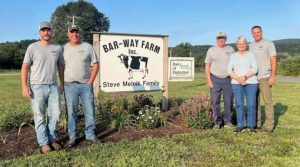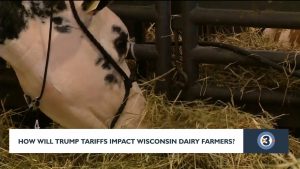
Altogether, the governor has directed $100 million under the program go to farmers harmed from a range of economic setbacks largely out of their control.
“From trade wars and supply chain issues to environmental issues, Wisconsin farmers and their families have faced challenges for years as they’ve worked to make sure Wisconsinites and families across the country could put food on their tables,” Evers said in a statement. “Our farmers have always had our backs, and we’ve got to have theirs.”
The first two rounds of the Farm Support Program distributed about $50 million to more than 15,000 farmers across the state in 2020. This most recent round saw a 33% increase in the number of applications for assistance.
Direct support to farmers through three rounds of the program exceeded $1 million per county in more than half of the state’s 72 counties. Farmers in Grant County, for example, received more than $6 million. Marathon and Dodge counties, it was more than $3.6 million.
Since 2000, Wisconsin has lost 68% of its dairy farms, most of them small- and medium-sized operations that couldn’t withstand years of low milk prices, rising costs, and trouble finding hired help.
An estimated one-in-nine Wisconsin jobs are in agriculture.
“So the interest we saw in this program has far-reaching impacts,” state Agriculture Secretary Randy Romanski said in a statement. “Farmers recirculate these dollars in their local communities.”
Taxes, regulations and supply chain problems are among the issues farmers are struggling with as the price they receive for their goods sometimes doesn’t even cover their costs.
Some Wisconsin farmers have called for changes in federal policies.
“It’s clear that we need to be looking at improving upon our food systems and making them work better for both the farmer and the consumer,” said Darin Von Ruden, president of Wisconsin Farmers Union, a group representing mostly small and midsize farms.
Even 15 cents more for a gallon of milk at the grocery store could help dairy farmers, provided they captured the increase, according to Von Ruden.
“I think many consumers would be willing to pay that to keep family farms on the land,” he said.
“We need to make sure we’re working on a system that can accommodate different types of dairy practices, which is not the case with our current system. The present model is trending toward increased consolidation and weakened food security with the loss of family farms.”

























